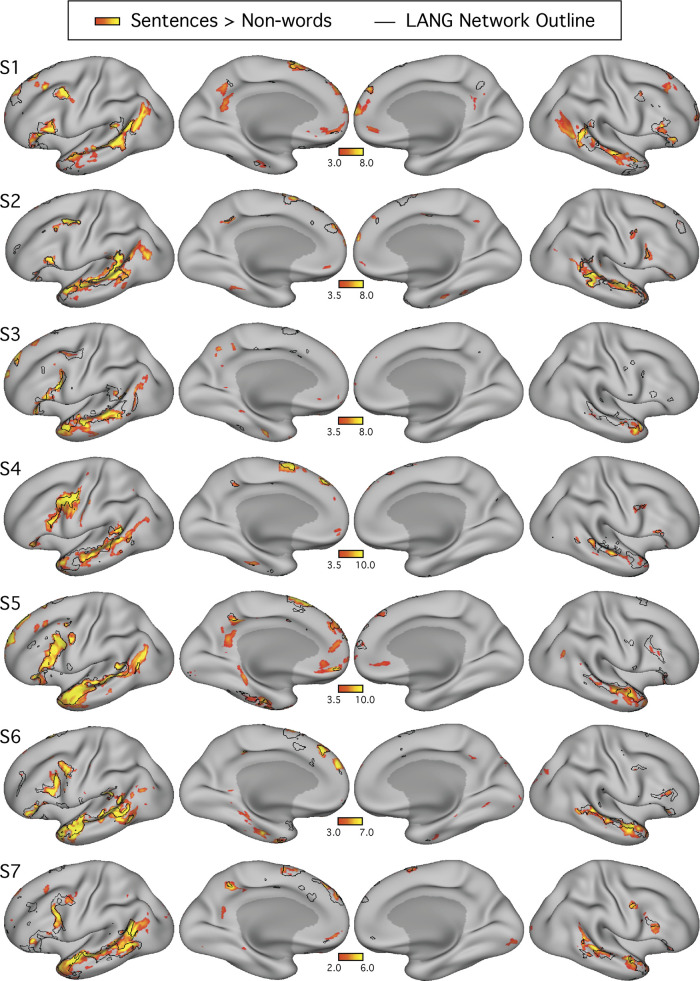Fig. 5.
The candidate language network shows close spatial correspondence with regions activated during a language task contrast. The language network (LANG) is shown in black outline and was defined using k-means clustering. Independently acquired data collected during a language localizer task contrast (Fedorenko et al. 2010) reveals cortical response to linguistic demands. Red-yellow color bars show within-individual z-normalized β-values (i.e., “increased activation”) for the contrast of reading sentences vs. reading lists of nonwords. In all subjects (S1–S7), the language task activations fell largely within the boundaries of the intrinsically defined candidate language network. The overlap was not perfect, and in some cases hints of other networks can be seen (e.g., see S1 and S5), although these exceptions were not consistent across subjects. The upper and lower thresholds were selected by eye for each subject to show the distribution of language-responsive regions, while removing regions showing low responses. The detailed anatomy of the distributed intrinsic network corresponds closely with regions showing task-driven activation, including in smaller areas extending beyond the classical language zones (e.g., see S2 and S4), suggesting that the entire intrinsically organized network is functionally specialized.

